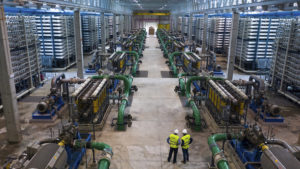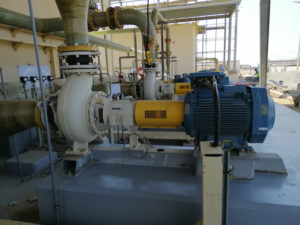UCLA Forms Water Technology Research Center
UCLA’s Henry Samueli School of Engineering and Applied Science has formed a new Water Technology Research Center that will develop technologies to turn brackish or seawater into fresh water. Researchers at the center also will study methods to ...
...minimize environmental impacts associated with desalination — the removal of salt and other pollutants from water, and will seek to lower the cost of desalination by integrating it with innovative energy generation.
“Water scarcity is intensifying in all regions of the country. The need for an adequate supply of affordable, accessible, clean water is a key priority for our nation’s future and for Southern California,” said UCLA Engineering Dean Vijay K. Dhir. “As the birthplace of the first viable reverse-osmosis membrane in the 1960s, it is entirely fitting that the UCLA School of Engineering should continue to take this important research to the next level and beyond.”
The UCLA Water Technology Research Center, dubbed the WaTeR Center, will be led by chemical engineering professor and desalination expert Yoram Cohen, and will be the first such center on the West Coast. The WaTeR Center will focus on specific water technology issues, enlisting multidisciplinary project teams involving researchers from several academic institutions including UCLA, UC Davis, UC Riverside, USC and the Universitat Rovira i Virgili in Spain.
Cohen has been working on generating initial funding for the center with civil and environmental engineering assistant professor Eric Hoek and professor emeritus Julius Glater, both experts in desalination and membrane processes. The endeavor already has been awarded a $1 million grant from the State of California and $1.6 million in contributions from other donors.
Cohen, who announced the formation of the center at the Urban Water Institute’s Seawater Desalination and Power Conference luncheon on June 23 in Long Beach, Calif., said, “As finite water sources are depleted, we must look at new ways to address the serious water problems that confront us. We must innovate our way to clean, affordable water independence, which is why the research we are undertaking at the UCLA Henry Samueli School of Engineering and Applied Science is so vital. Our goal is to help make California a world leader in water desalination research and technology while training the next generation of desalination experts.”
The development of next-generation desalination technologies is critical — saline and brackish waters constitute more than 97 percent of the water in the world. Less than 3 percent of water has a salinity content that can be considered safe for human consumption, according to the National Academies’ “Review of the Desalination and Water Purification Technology Roadmap.”
The current water infrastructure in the United States continues to degrade due to age and increasing salinity. The current salinity of Colorado River water, the primary source of water for 27 million people in California, already has an approximate salinity level of 700 mg per liter, 200 mg higher than the set standard deemed acceptable by the EPA.
As the population of California continues to climb — by some estimates Southern California alone is expected to increase a record 8 million people by 2020 — both the infrastructure and the salinity challenges will escalate.
Currently, as the result of the necessary importation of water into California, about 630,000 tons of salt annually accumulates in California aquifers, damaging the state’s water infrastructure in the range of $95 million per year. Dealing with the water waste and the disposal of the concentrated pollutants collected from the water also is an expensive challenge.
“Water independence for California will require practical and economical production of new water sources in addition to water conservation and reclamation technologies that will reduce energy consumption,” Cohen said. “The UCLA Water Technology Research Center will look at new ways to enhance water recovery, as well as methods to increase membrane efficiency and decrease membrane fouling. As just one example, we will explore how to create a membrane surface that is less prone to fouling and scaling guided by modern tools to evaluate surface adhesion at the nanoscale.”
UCLA’s School of Engineering already has 16 Ph.D. students studying various aspects of new water production including desalination via low-pressure reverse osmosis membranes. The WaTeR Center also plans to initiate research on the integration of renewable energy, energy recovery and solar energy to power desalination plants and to enhance the production of desalted water.
Source: UCLA Water Center






